Now that I’m “done” (probably) making music for the 2012 RPM Challenge, it’s time for a few posts reflecting on the experience. First up, the prime question: why do I do this? Or, in a more Shakespearean tone, wherefore the challenge?
Last night on Tumblr, my Internet friend and a musician I greatly admire (and whom I met through my first RPM in 2008), Joshua Wentz, posted:
In Februarys past I took part in the RPM Challenge, but it isn’t for me any longer. I outgrew it, which is a shame, because there was a tipping point for that project where it could easily have become the biggest thing in music. Alas, it is not to be.
The idea that he had “outgrown” RPM stuck with me after reading that. On one hand, it stung just a bit, because here I am participating in RPM while he and several other musicians I met through RPM that year have all seemingly moved on. But on the other hand, it was a sentiment I completely understood, and have felt myself since 2010, the first time I (effectively) skipped RPM. I was so inspired and motivated by my intended album concept that year that I went ahead and recorded it in January (in two weeks), thus disqualifying it for RPM. (Then I did end up submitting an album for RPM, but it was entirely improvised and recorded in one afternoon, on February 22.)
The RPM Challenge has never really been a challenge for me; I typically complete my album in two weeks or less. Finishing in a week this year is exceptional even by my standards, but I never come down to the wire. It’s just not how I operate.
Granted, a big factor in how quickly I produce music is my style, and my approach. My music is almost entirely instrumental and fairly improvisatory, and I use MIDI a lot. I think a huge time-suck for most musicians is lyric writing and carefully crafting a perfect song structure, as well as tweaking mic setups. I have none of that in my process. Plus, it’s just me. If there were more people involved, we’d also have to negotiate schedules and the inevitable conflicts. (I am not without internal conflict, of course.)
Let’s refine the question: Why do I still participate in RPM? I don’t need the external pressure of the challenge to get an album done; I am, if anything, excessively motivated when I start making music. And each year I am less and less involved in the “community” surrounding the challenge, so the timing becomes almost irrelevant.
I guess you could say I’ve outgrown RPM too, but that’s not quite an accurate, or at least complete, description of the situation. It’s also that RPM has failed to grow with me. The challenge got a lot of publicity in late 2007, which is when I learned about it. It was featured on several prominent websites and even on NPR. But its organizers haven’t done anything with it. I guess they’re satisfied to keep it where it is. Unfortunately, “where it is” is a horribly designed Joomla! (yes there’s an exclamation point in the name *shudder*) website with a terrible interface, one that has only had minor surface updates in the 5 years I’ve been looking at it.
But an ugly, unusable website only scratches the surface of what’s disheartening to a serial RPM participant like myself. It’s that apparent lack of desire by its founders to let RPM itself grow that makes it feel so easily outgrown, which is ironic since the entire purpose of the challenge is to spur its participants into growth as musicians by successfully completing an album project.
So, if it’s not the community and the collective experience that compels me, why do I do it? Looking back on my past few RPM albums, I’ve started to notice a pattern: RPM becomes the catalyst to get me to try something new and crank out a bunch of music, which then ends up informing the musical work I do for the rest of the year. I can already feel that coming with this particular challenge.
Pocket Symphonies, built around the idea of using an iPhone as the sole instrument, has been a success, but it’s been an experiment. The music that resulted is like something out of an R&D lab. It’s a prototype. I’ve learned a lot about what does and doesn’t work when trying to make music on an iPhone (which will be the topic of a follow-up post in a few days), and I probably only would have done that with these arbitrary parameters, partly set up by the RPM Challenge and partly by my own vision for what I wanted to do.
I’ve been playing around with iPhone music apps for years, but it was only when I committed to recording an entire album using them that I forced myself to really see what they could do, and even now I feel like I’ve merely scratched the surface. But now I feel like I know how I can integrate the iPhone (and iPad) into my “regular” music-making activities in creative ways.
Beyond production techniques, this album was a chance for me to explore some musical styles I’ve been interested in working with. In particular, I’ve become increasingly interested in the chillwave style of electronic music, especially since falling in love with the theme music from Portlandia, which I have since leared is a song called “Feel It All Around” by Washed Out. I recorded a couple of tracks that I think put my own typically idiosyncratic spin on this style, and I am looking forward to pursuing more of that in the coming year.
Reflecting on all of this, I guess the RPM Challenge is, like life, what you make of it. It’s looking increasingly unlikely that the organization behind the “official” challenge is ever going to develop it into the kind of thing I once wanted it to become, but that doesn’t really matter. And whether or not I only record during the month of February, whether or not I even bother to submit the CD to RPM HQ on March 1, also doesn’t really matter. What matters is finding that source of inspiration that allows a person to channel their creative energies into something tangible. And RPM, whatever it is, still does that for me.

